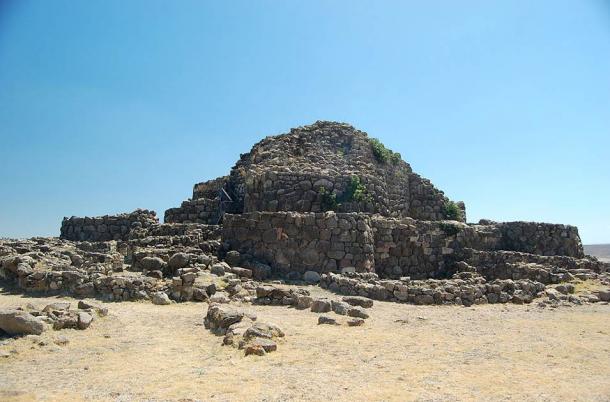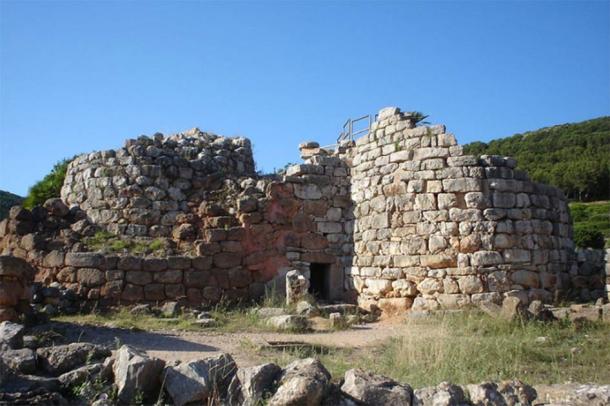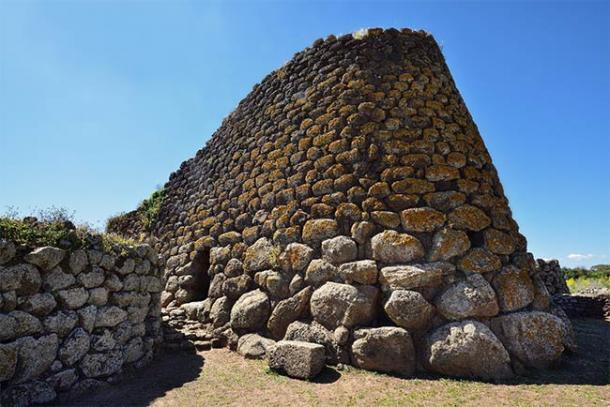All over the Mediterranean island of Sardinia exist megalithic marvels that date from almost 4000 years ago. These mostly limestone structures are believed to have belonged to a civilization now known as the Nuragic people. Called ‘nuraghe’, they are a wonder to visit and immerse oneself in the ancient civilization that, for some reason – be it internal struggles, or external invasion – had reason to construct thousands of these highly defensive edifices. Here we explore several of the best-preserved sites.
Mysterious Civilization Enduring Through the Ages
Before Sardinia was occupied by the more modern civilizations of the Spaniards, Byzantines, Romans and Carthaginians, a mysterious civilization flourished on the island from the 18th century to the 3rd century BC.
Very little is known about this ancient civilization since they had no written language and left behind very few items providing evidence of how they lived. Even their name, Nuragic, is a term used based on the description of the fortress-like structures that they once built, called Nuraghe. These towering, sturdy architectural feats were constructed during the Bronze Age and are dispersed throughout Sardinia, totaling about 7000 structures in all.
Here we explore several of the best-preserved sites.
Su Nuraxi of Barumini
The Su Nuraxi site is found in the central region of the island, at Barumini, with the clue to its importance being in its very name. ‘Su Nuraxi’ means not a nuraghe, but the nuraghe. It is the most famous nuraghe in Sardinia and is the only designated UNESCO site on the island. The extensive site is one of the best preserved of the 30 Barumesi sites of the area and certainly the best complex as a whole. It was the first site to be explored by archaeologist Giovanni Lilliu and which led to his definition and ‘discovery’ of the Nuragic civilization.

17th century Nuraghe Su Nuraxi, in the south central Barumini region of Sardinia (Ciamabue / CC BY 2.0 )
It includes a complex nuraghe as well a substantial village of huts. It seems this was an important center of power and commerce in prehistoric times.
The structures are made from volcanic basalt stone sourced nearby and was active over 2000 years from 16th century BC to the 7th century AD. The complex includes the tower (or keep) with a bastion at each of its four corners. A village of 50 huts sprawls out surrounding this central structure.
This tower was once 18.5 meters (60 ft) tall and was erected in the Middle Bronze Age (16-14th century BC). It contained 3 rooms over 3 levels, and was topped with a tholos or false dome, a wooden roof which also was used for the other buildings in the village.
The Nuraghe Palmavera
The Nuraghe Palmavera is similar to all the nuraghe structures and is one of the largest and most important examples, after the Barumini complex. It is located on the Palmera headland, overlooking a bay the Romans romantically called the ‘Harbor of the Nymphs’ near the modern beachfront resort town of Alghero.

A view of Nuragic complex of Palmavera. ( CC BY-SA 3.0 )
It is believed that Nuraghe Palmavera was built in phases starting in the 15th century BC with a main tower that stands almost 8 meters (26 feet) high and 10 meters (33 feet) in diameter, including the beehive shaped roofs. It is estimated that a village of up to 150-200 huts surrounded the tower, with only 50 existing today. A new phase of development was completed in the 9th century BC with the addition of an exterior wall and additional huts. Although built using limestone blocks and sand, the Nuraghe Palmavera was destroyed by fire in the 8th century AD, but parts of the structure remain intact.
Today, this Nuraghe complex is one of the most popular tourist destinations in Sardinia, along with the Nuragic complex of Barumini, which UNESCO declared a World Heritage Site in 1997.
Nuraghe of Santu Antine
This naraghe is a giant amongst giants, with the central tower once standing at a dizzying 23 to 24 meters (75-78 ft) and is the tallest naraghe of all. Santu Antine is located in the northwestern Sardinian province of Sassari, close to the town of Torralba. It is surrounded by a small

Nuraghe Santu Antine, the largest nuraghe . (Antonio Figoni, CC BY-SA 4.0 )
Nuraghe La Prisgiona
The site Nuraghe La Prisgiona is extensive at around 5 hectares and includes 90 Bronze Age buildings that have been excavated so far and those around the main building are very well preserved. It is a real chance to get a feeling of the past as you weave around the enclosures. The main building is the classic three tower nuraghe but it also features an enclosed courtyard.
The site is located in Arzachena, near Costa Smeralda (Emerald Coast) in the northeast of Sardinia.
Nuraghe Losa
Nuraghe Losa is a distinctive and well-preserved nuraghe that is located near the village of Abbasanta, in the central-western region of Sardinia. It is named ‘nuraghe of the tombs’ which refers to the Roman cinerary urns carved into the rocks nearby, as during the Roman era it was used for funerary purposes.

The giant and imposing structure is reminiscent of a ship’s bow. ( franke 182 / Adobe Stock)
It is most remarkable for the shape which is triangular and can be compared to the bow of a ship and it is obvious that the masonry techniques were reaching some refinement by this point, the 14th-15th century BC.
There is a main entrance raised above ground level through which a corridor leads to three of the internal towers. A fourth tower is accessed through a separate entrance. These towers are not obvious from the outside as the whole edifice appears as a solid mass of rock. Just why such a fortification was thought required remains a mystery, but this would surely have been virtually impenetrable.
As well as the three rooms, the main keep tower has a small spiral ramp leading to an upper chamber. There are also 3 wells for storage and a cistern in the western tower.

Arial view of Nuraghe Losa showing it’s triangular shape with 4 towers. ( marco / Adobe Stock)
Only a small part of the surrounding settlement has been excavated but includes buildings from the late Punic, Roman Republican and Imperial, Late Roman and Byzantine periods.
There is also a Giant’s tomb, another interesting megalithic feature of the island.
A Nuragic Civilization Legacy
While the Nuragic civilization may be extinct and stories of their history now the stuff that legends, the magnificent stone structures that they left behind provide testament to a mighty society with a penchant for extreme defense. This is just a small taste of some of the best of the many sites it is possible to visit from this fascinating if enigmatic era.
Top image: A view of a reconstructed hut at the Nuraghe Antine site at night. Source: Francesco Ghiani, CC BY-SA 3.0
By Gary Manners
 RSS Feed
RSS Feed















 February 2nd, 2021
February 2nd, 2021  Awake Goy
Awake Goy  Posted in
Posted in  Tags:
Tags: 













